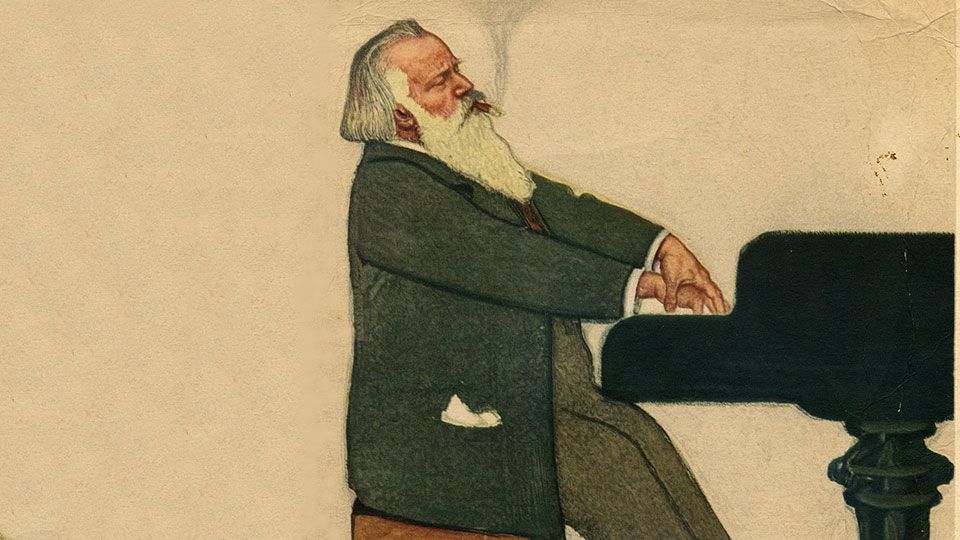
Brahms magnificence live on DR with gratis Rosé Wine
Syddansk Musikkonservatorium, Esbjerg. Sunday 24th August 2025 at 4 pm
SINGLE TICKETS All-inclusive Festival Ticket KR. 700,-
Johannes Brahms: String Quintet No. 2 in G Major, Op. 111
Jean-Michel Damase: Trio for Oboe, Horn, and Piano
Sergei Taneyev: Piano Quartet in E Major, Op. 20
“Brahms live on DR with gratis Rosé Wine” — a celebration of masterful performances, rare musical treasures, and the vibrant energy of international artists, closing seventeen unforgettable concerts. The programme also highlights composers whose work represents significant turning points in European music history.
Written in the last decade of the 19th century, Brahms’s String Quintet No. 2 belongs to a period when he was consciously concluding his compositional career, aware of his place at the end of the Romantic era. Meanwhile, Jean-Michel Damase’s Trio for Oboe, Horn, and Piano (1968) reflects a broader trend in post-war France, where composers balanced modernism with traditional forms, responding to shifts in musical culture after World War II. Sergei Taneyev’s Piano Quartet in E Major, composed in early 20th-century Moscow, stands as part of a larger Russian engagement with Western classical structures, a path Taneyev pursued as a theorist and teacher at the Moscow Conservatory.
Johannes Brahms: String Quintet No. 2 in G Major, Op. 111
Brahms composed his String Quintet No. 2 during the summer of 1890 in the idyllic setting of Bad Ischl, Austria. Originally intended to be his final composition — Brahms even hinted at retirement afterwards — the work radiates a youthful vitality that belies any notion of farewell. The quintet’s sunny G major tonality, rich textures (thanks to the addition of a second viola), and expansive melodies evoke an almost symphonic grandeur within a chamber setting. The opening movement brims with exuberance, while the inner movements reveal Brahms’s gift for introspection, rhythmic play, and intricate harmonic layering. Although he would continue composing after this, Op. 111 stands as a testament to Brahms’s mature mastery of form, color, and deeply human expression.
Jean-Michel Damase: Trio for Oboe, Horn, and Piano
Jean-Michel Damase’s Trio for Oboe, Horn, and Piano (1968) blends French neoclassical clarity with a vibrant, contemporary expressiveness. The opening Allegro moderato immediately showcases Damase’s deft handling of timbre, allowing the horn and oboe to intertwine lyrical and rhythmic lines while the piano provides shimmering textures. The central Andante moves into a world of introspective lyricism, balancing modal harmonies and delicate phrasing with occasional touches of melancholy. The closing Allegro vivo bursts forth with kinetic energy, using lively rhythms, witty interplay, and lightness of touch — hallmarks of Damase’s ability to evoke character and contrast without ever losing elegance.
Sergei Taneyev: Piano Quartet in E Major, Op. 20
A student and close associate of Tchaikovsky, Sergei Taneyev composed his Piano Quartet in E Major between 1906 and 1911, during a period when he was refining his reputation as Russia’s leading contrapuntist. Taneyev’s deep admiration for classical form and structure — particularly that of Beethoven and Brahms — is evident throughout the quartet. Yet his voice remains distinctively Russian, blending elegant architecture with soaring, emotionally charged melodies. The work’s expansive first movement showcases his command of motivic development, while the scherzo sparkles with rhythmic brilliance. The slow movement offers lyrical depth, and the lively finale reveals both technical exuberance and architectural sophistication. Taneyev’s career also included major contributions to Russian musical education, and his advocacy for complex polyphonic writing set him apart from the nationalist traditions favoured by his contemporaries.
Johannes Brahms: String Quintet No. 2 in G Major, Op. 111
I. Allegro non troppo, ma con brio
II. Adagio
III. Un poco allegretto
IV. Vivace, ma non troppo presto
Jean-Michel Damase: Trio for Oboe, Horn, and Piano
I. Allegro deciso
II. Andante
III. Presto scherzando
IV. Molto moderato
Sergei Taneyev: Piano Quartet in E Major, Op. 20
I. Allegro brillante
II. Scherzo: Presto
III. Andante
IV. Finale: Allegro molto
Maria Wloszczowska, Pablo Hernán Benedí, Tim Crawford – violin, Michel Camille, Hélène Clément – viola, Pau Codina, Eddie Pogossian – cello, David Daniel Dinu – oboe, Joke Wijma – horn